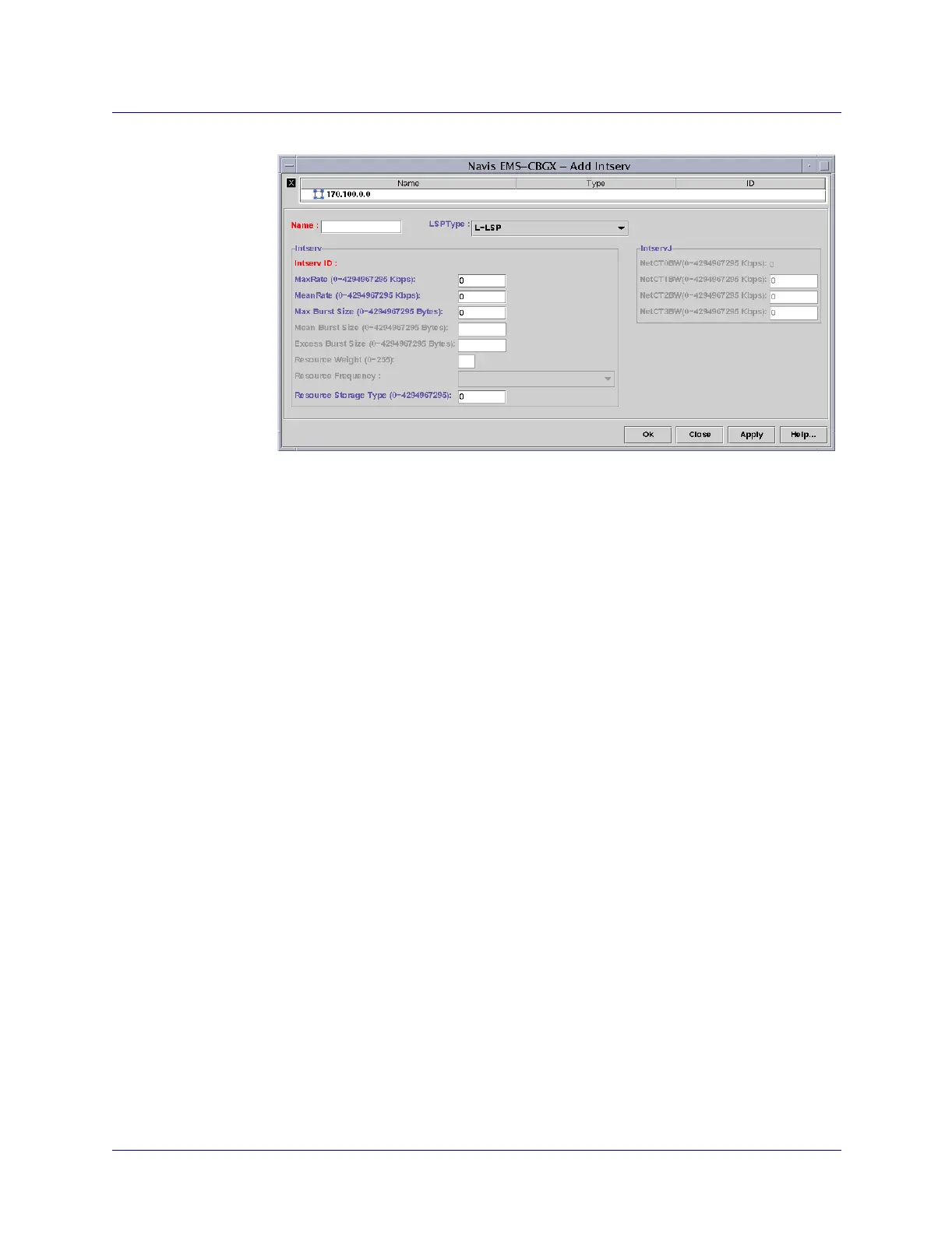Beta Draft Confidential
Configuring ATM Over MPLS Gateway Solution on CBX 3500
Network-wide MPLS Settings
ATM Services Configuration Guide for CBX 3500, CBX 500, GX 550, and B-STDX 9000 1/19/059-11
Figure 9-5. Add Intserv Dialog Box
4. Enter a unique alpha-numeric name for this Intserv profile.
5. In the LSPType field, select L-LSP, E-LSP-IntServ, or E-LSP-IntServJ.
• L-LSP – Label-only-inferred-PSC LSP. The MPLS tunnel (LSP) will be a
single QoS LSP, based on the PHB scheduling class identifier (PSCID)
configured on the DiffServ profile. IntServ bandwidth configured will be
allocated for only one QoS.
• E-LSP-IntServ – EXP-inferred-PSC LSP. Standards-based E-LSP MPLS
tunnel (LSP) will support all the eight QoS types based on EXP bits. Eight
QoS types translate to four ATM QoS classes with CLP bit 1 or 0 for each
class. The IntServ bandwidth configured will be shared between all the QoS
classes dynamically during PWE3 set up or Layer 2 tunnel configuration. This
is a dynamic mode operation. This approach is standard.
• E-LSP-IntServJ – Juniper’s proprietary method of configuring signaling
mapping between class types and bandwidth for up to four class types. Class
type (CT) is very similar to Class of Service (COS). Note that Juniper’s class
type is in reverse order to Lucent’s QoS classes. For example, CT0 is
equivalent to QoS class 3 (UBR).
MPLS Tunnel (LSP) will support all eight QoS types based on EXP bits.
Eight QoS types translate to four ATM QoS classes with CLP bit 1 or 0 for
each class. IntServJ provides the ability to configure bandwidth per QoS for
four QoS classes. PWE3 and Layer 2 tunnels can only consume bandwidth
from available bandwidth of a required QoS class. This is a Fixed mode
operation. This is a Lucent proprietary implementation.
6. Depending on the LSP type chosen, different fields will be available in this dialog
box. Complete the fields as described in Table 9-3.
